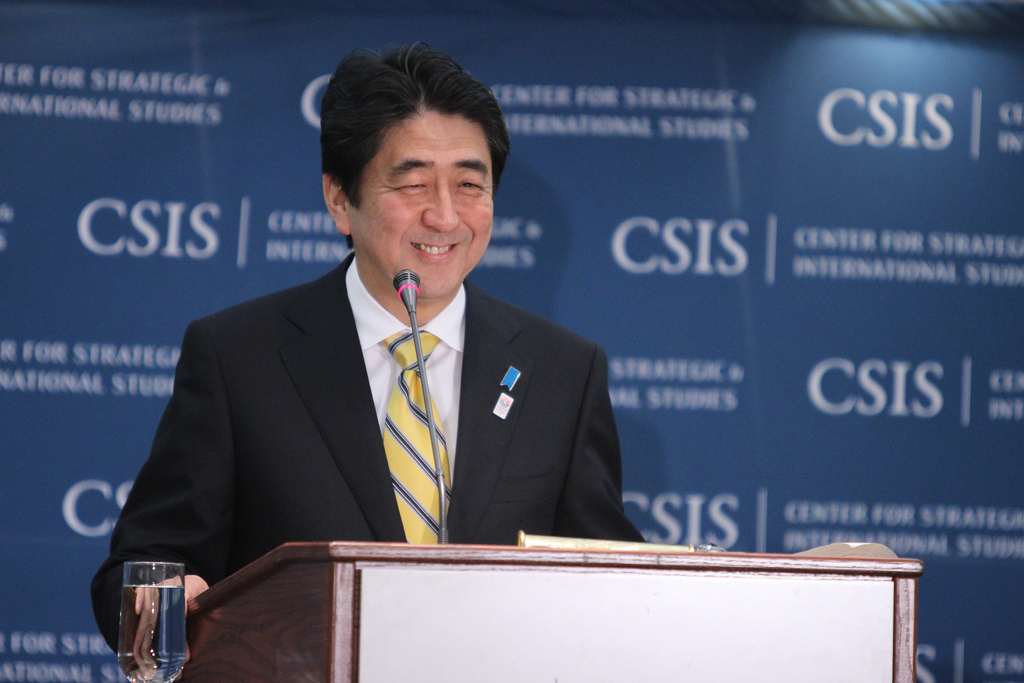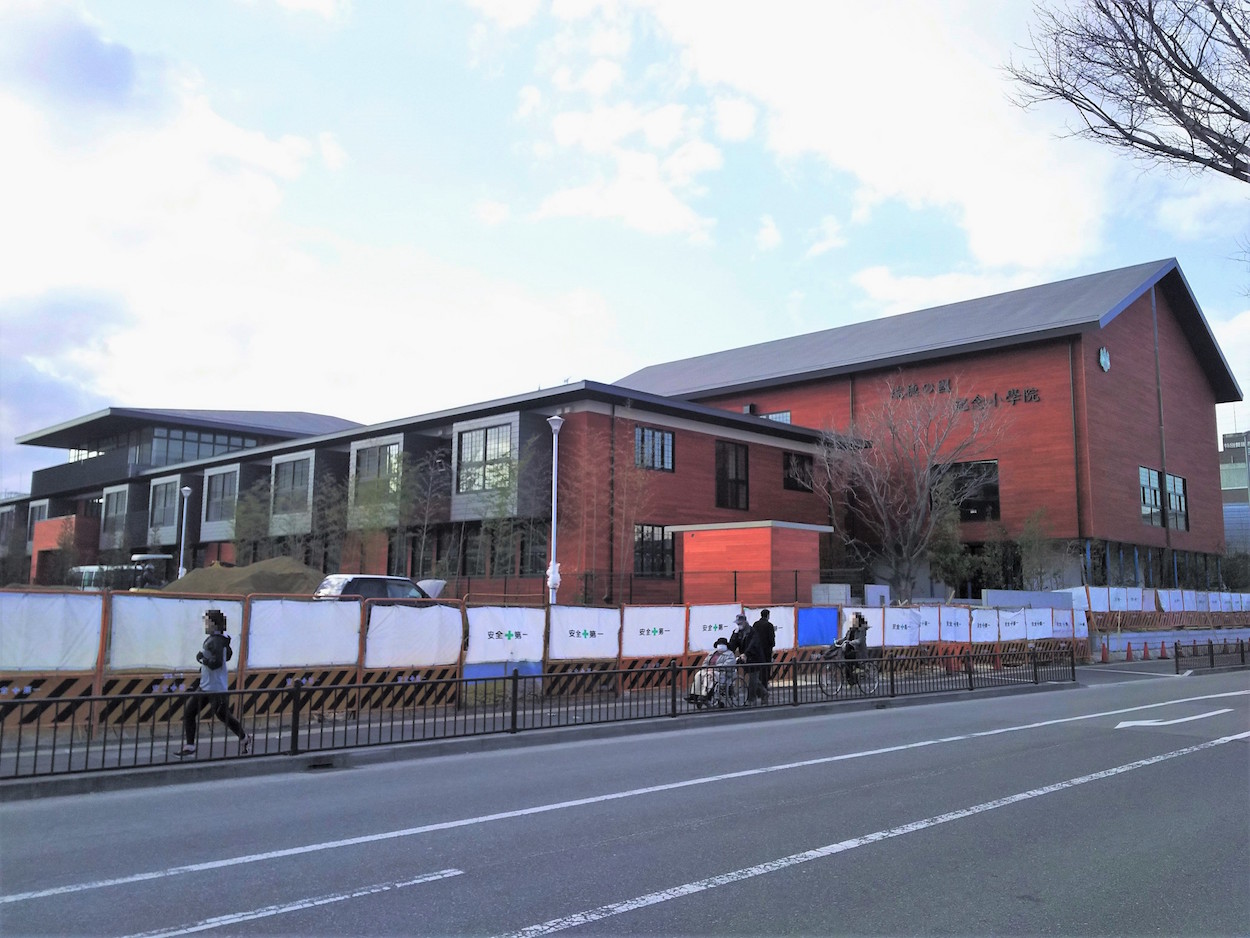by Brian Hioe
語言:
English
Photo Credit: Kremlin/Public Domain
PROTESTS AGAINST Shinzo Abe are on the rise in Japan again, as evidenced in a recent protest in Tokyo that drew several thousand over the past week. In particular, the protest was organized by former members of the Students Emergency Action for Liberal Democracy (SEALDs) group that organized demonstrations against Abe in 2015 and 2016. At its height, SEALDs was able to mobilize over 100,000 onto the streets of Tokyo.
SEALDs opposed Shinzo Abe in 2015 and 2016 due to opposition to Abe’s planned reinterpretation of the Japanese constitution, which since the end of World War II has forbidden Japan from waging war. While Japan maintains a de facto military, this is instead legally a “Japanese Self-Defense Force” (JSDF) forbidden from waging war except in cases of self-defense, as mandated by Article 9 of the Japanese constitution.
 Shinzo Abe. Photo credit: Ajswab/WikiCommons/CC
Shinzo Abe. Photo credit: Ajswab/WikiCommons/CC
However, Abe wished to reinterpret the Japanese constitution in such a manner that Japan would be able to come to the aid of allies under attack. The unbridling of the Japanese military has been a longtime goal for Abe, particularly seeing as Abe has pursued right-wing nationalist policies with the aim of restoring Japan to its past glory. Abe is widely perceived as pursuing aims of remilitarizing Japan due his being the latest scion of a powerful political family dating back to before World War II, it having been an ambition of his grandfather, Nobusuke Kishi, to restore Japan to military might after its defeat in World War II. Abe is on track to be the longest-serving prime minister in postwar Japanese history, although not without periodic setbacks.
Deployments of the JSDF to South Sudan in November 2016 were perceived in Japan as trial runs by Abe for future foreign interventions. These, however, became scandal ridden due to lack of accountability for actions by JSDF troops and accusations of an attempted cover-up of their actions, leading to the resignation of defense minister Tomomi Inada, an Abe protege.
SEALDs was notably less radical than groups which emerged from the post-Fukushima anti-nuclear movement, which saw its height in 2012, or the past history of anti-war demonstrations in Japan. For example, in opposing the reinterpretation of Article 9, demonstrators cited in past demonstrations that Japanese youth face poor conditions in which they take on precarious forms of labor for little pay, and that waging war would further disrupt the lives of Japanese young people, rather than an explicitly anti-war stance, or one explicitly critical of the right-wing nationalism of the Abe administration. Controversy later erupted due to members of the group criticizing a Zainichi Korean professor or criticizing survivors of the Fukushima incident that refused to move back to Fukushima following the 2011 Fukushima disaster.
Nevertheless, the outbreak of SEALDs reflects poor conditions faced by young people across the world, and the uptick of youth movements globally in response to these conditions, with young people asserting that they, too, could participate in politics. In this sense, SEALDs can be situated alongside the 2014 Sunflower Movement and Umbrella Movement in Taiwan and Hong Kong respectively, protests against South Korean president Park Geun-hye in 2016 and 2017, among others.
Demonstrations in Japan presently directly focus on the Moritomo Gakuen scandal, regarding improper subsidies received by a controversial preschool known for attempting to instill nationalist values in its students. The owners of Moritomo Gakuen, Yasunori Kagoike, is known to have close ties to the Abe family, and Abe is accused of improperly using his position to aid Moritomo Gakuen.
 Moritomo Gakuen school under construction. Photo credit: L26/WikiCommons/CC
Moritomo Gakuen school under construction. Photo credit: L26/WikiCommons/CC
However, demonstrations continue to concern themselves with the issue of the Article 9 reinterpretation, seeing as Abe’s current timeline for constitutional reinterpretation is 2020. In many ways, SEALDs undercut itself by dissolving in 2016 before Upper House elections in 2016.
Momentum seems to be building for further protests. It is still to be seen whether this can reach the height of previous protests, as well as whether these protests will be successful whereas previous protests were unsuccessful. SEALDs notably claims to be inspired by protests against Park Geun-hye in South Korea in 2016 and 2017, in that they were successful in forcing Park and her associates to step down.
It is not impossible that learning between different movements has occurred since the wave of youth protests in the past several years in Asia. Leaders of SEALDs, as well as Umbrella Movement leaders, Sunflower Movement leaders, South Korean youth leaders and other leading youth activists from Thailand, Mongolia, Cambodia, the Philippines, Tibet—a total of nine Asian countries—formed the Network of Young Democratic Asians (NOYDA) in the past several years. However, activities by NOYDA is limited to some conferences and a few public statements released when individual members have been arrested.
Yet it remains to be seen how youth movements across Asia can develop deeper ties with each other that prove mutually beneficial. And whether protests against Abe can succeed, too, is unknown.

